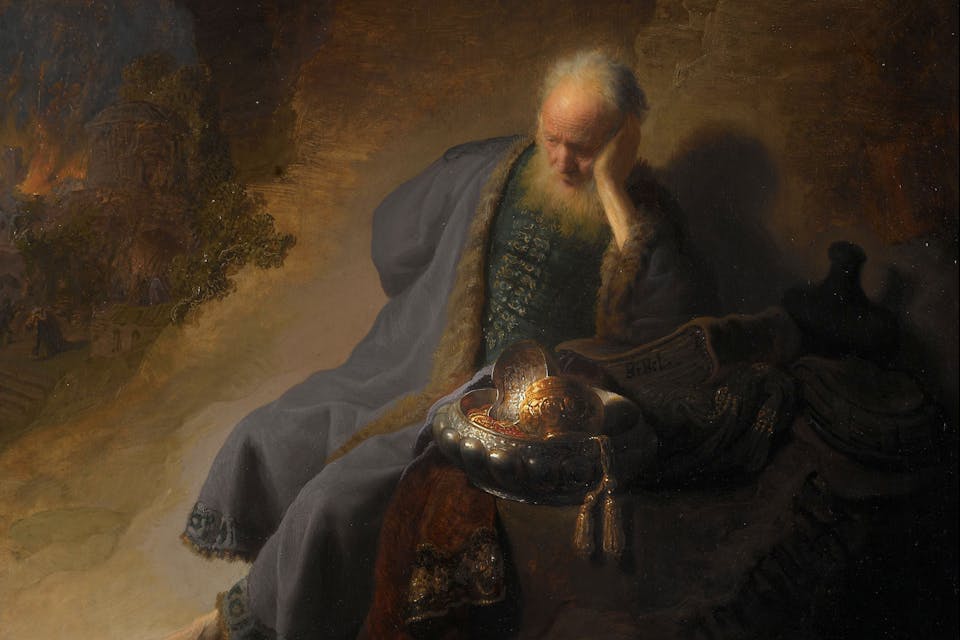
July 12, 2018
How Rembrandt Understood the Destruction of Jerusalem (and Poussin Didn’t)
A tale of two paintings and one city.
This is the fifth in an occasional series of essays by Rabbi Meir Soloveichik on the intersection of Jews and Judaism with the artistic practice, and the aesthetic vision, of the great 17th-century Dutch master Rembrandt van Rijn. To see earlier installments, click here.
This is a tale of two paintings by two 17th-century masters. Both depict the same historical event. In every other respect, they present a complete contrast.
The first painting has a fascinating back story. During World War II, an eccentric Englishman by the name of Ernest Onians made a fortune with his invention of Tottenham Pudding, a form of pigswill produced from waste food. Having amassed his millions, Onians became an art collector, purchasing canvases at country fairs and garage sales and accumulating some 500 works in all. On his death in the early 1990s, his heirs consigned the whole lot to Sotheby’s, which rushed out a catalogue on the assumption that none of the paintings was especially valuable.